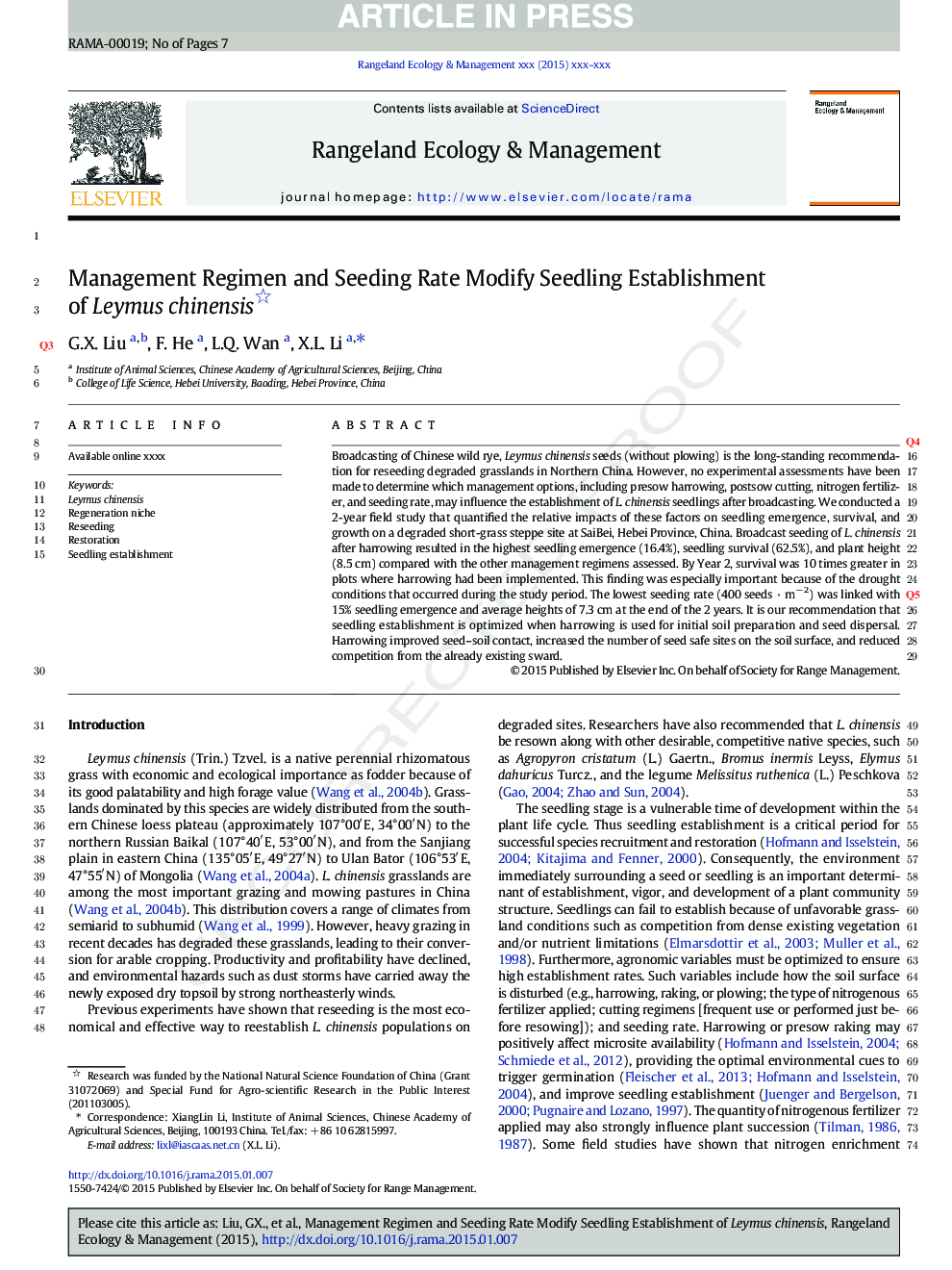| Article ID | Journal | Published Year | Pages | File Type |
|---|---|---|---|---|
| 4404213 | Rangeland Ecology & Management | 2015 | 7 Pages |
Abstract
Broadcasting of Chinese wild rye, Leymus chinensis seeds (without plowing) is the long-standing recommendation for reseeding degraded grasslands in Northern China. However, no experimental assessments have been made to determine which management options, including presow harrowing, postsow cutting, nitrogen fertilizer, and seeding rate, may influence the establishment of L. chinensis seedlings after broadcasting. We conducted a 2-year field study that quantified the relative impacts of these factors on seedling emergence, survival, and growth on a degraded short-grass steppe site at SaiBei, Hebei Province, China. Broadcast seeding of L. chinensis after harrowing resulted in the highest seedling emergence (16.4%), seedling survival (62.5%), and plant height (8.5 cm) compared with the other management regimens assessed. By Year 2, survival was 10 times greater in plots where harrowing had been implemented. This finding was especially important because of the drought conditions that occurred during the study period. The lowest seeding rate (400 seeds mâ 2) was linked with 15% seedling emergence and average heights of 7.3 cm at the end of the 2 years. It is our recommendation that seedling establishment is optimized when harrowing is used for initial soil preparation and seed dispersal. Harrowing improved seed-soil contact, increased the number of seed safe sites on the soil surface, and reduced competition from the already existing sward.
Related Topics
Life Sciences
Agricultural and Biological Sciences
Agricultural and Biological Sciences (General)
Authors
G.X. Liu, F. He, L.Q. Wan, X.L. Li,
